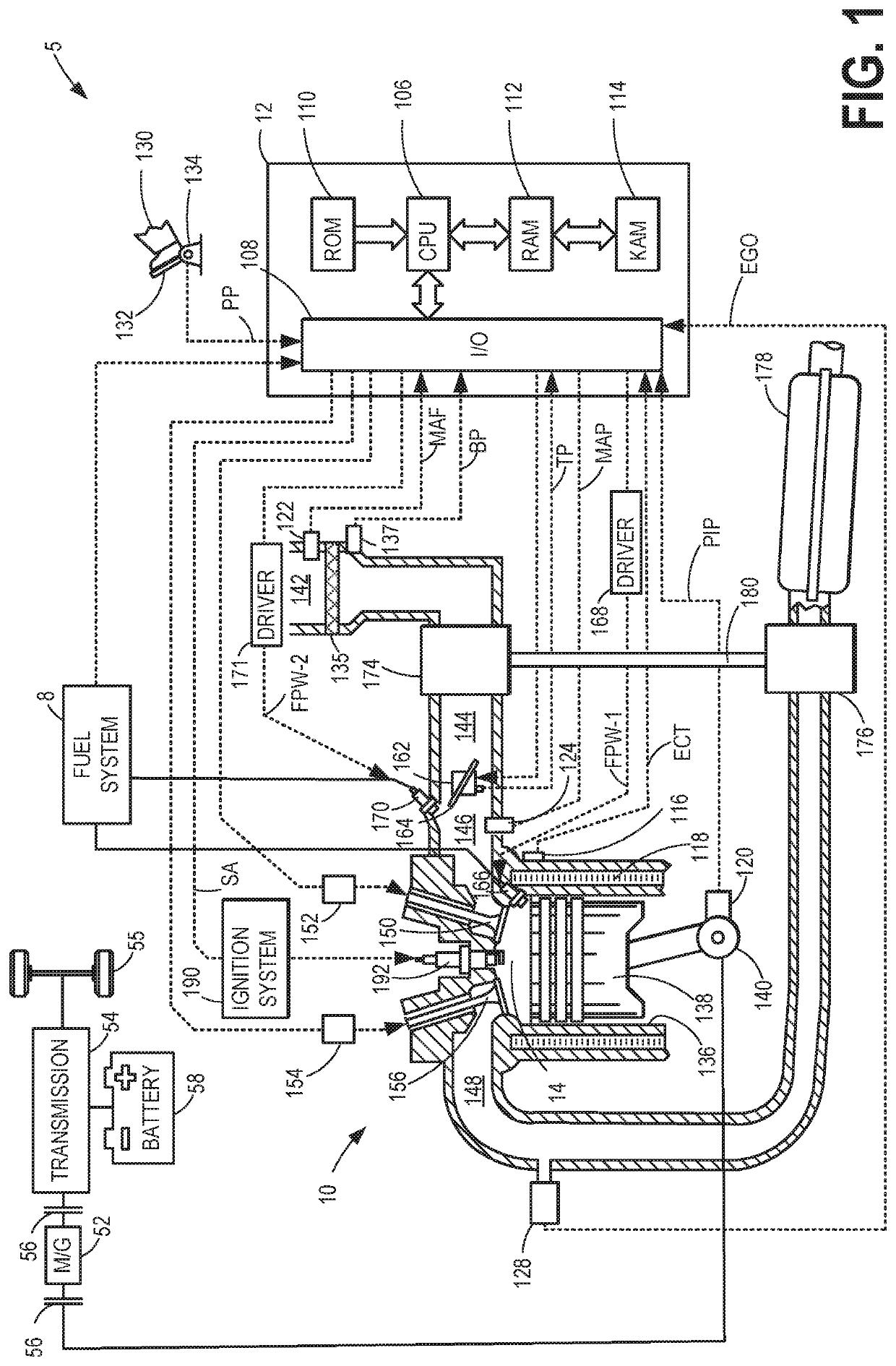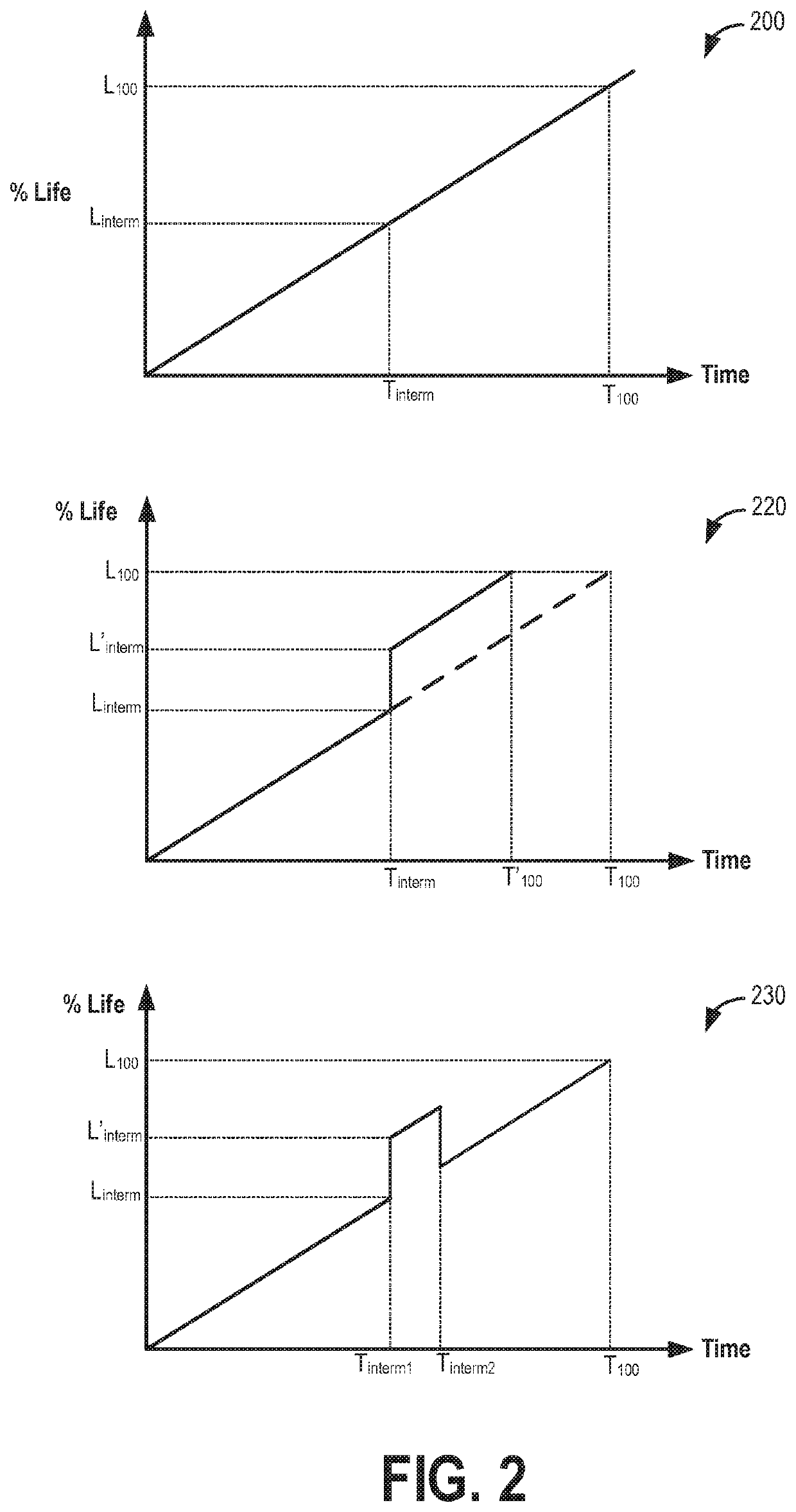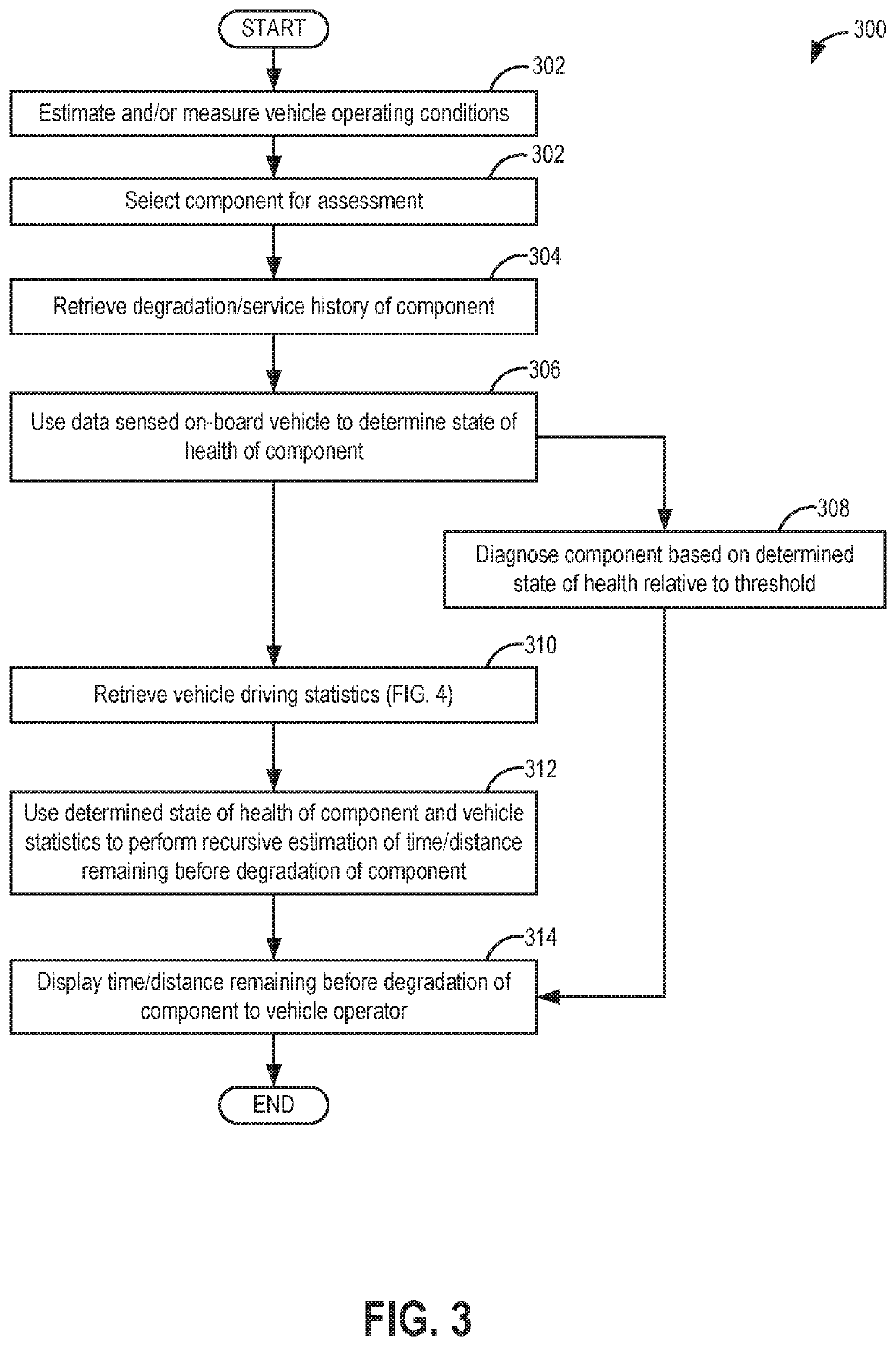Method for monitoring component life
a technology for component life and monitoring, applied in the direction of combustion-air/fuel-air treatment, battery/fuel cell control arrangement, instruments, etc., can solve the problems of large memory and processor resources, computationally intensive statistical analyses, and the inability to complete a prognostic or diagnostic routine, so as to improve vehicle performance, reduce the effect of internal resistance and capacitance of the system battery
- Summary
- Abstract
- Description
- Claims
- Application Information
AI Technical Summary
Benefits of technology
Problems solved by technology
Method used
Image
Examples
Embodiment Construction
[0022]The following description relates to systems and methods for predicting the remaining life of a component of a hybrid vehicle system, such as the example vehicle system of FIG. 1. An engine controller may be configured perform a control routine, such as the example routines of FIGS. 3 and 4, to use statistical methods to predict the remaining life of a vehicle component. The controller may take into account the degradation history of the component as well as vehicle driving characteristics to map out percentage life profiles, such as the example profiles of FIG. 2. The controller may then use the percentage life profile to provide the vehicle operator of a remaining time or distance till the component needs to be serviced. Vehicle operations may then adjust in accordance. A routine that predicts the remaining life of a vehicle battery (such as the routine of FIGS. 6-7) may rely on sensed and predicted changes in the resistance and capacitance of the battery, as shown with refe...
PUM
 Login to View More
Login to View More Abstract
Description
Claims
Application Information
 Login to View More
Login to View More - R&D
- Intellectual Property
- Life Sciences
- Materials
- Tech Scout
- Unparalleled Data Quality
- Higher Quality Content
- 60% Fewer Hallucinations
Browse by: Latest US Patents, China's latest patents, Technical Efficacy Thesaurus, Application Domain, Technology Topic, Popular Technical Reports.
© 2025 PatSnap. All rights reserved.Legal|Privacy policy|Modern Slavery Act Transparency Statement|Sitemap|About US| Contact US: help@patsnap.com



